Denver's RailRoads Blog Page
Recording the progress of building the Denver’s RailRoads N Scale layout
All genuine posts are welcomed and will be acknowledged. Please submit your first post by email to: dennis@denversrailroads.com
Wiring Update
Getting closer to operating, or at least switching with my Proto-Throttle, this part of the layout.


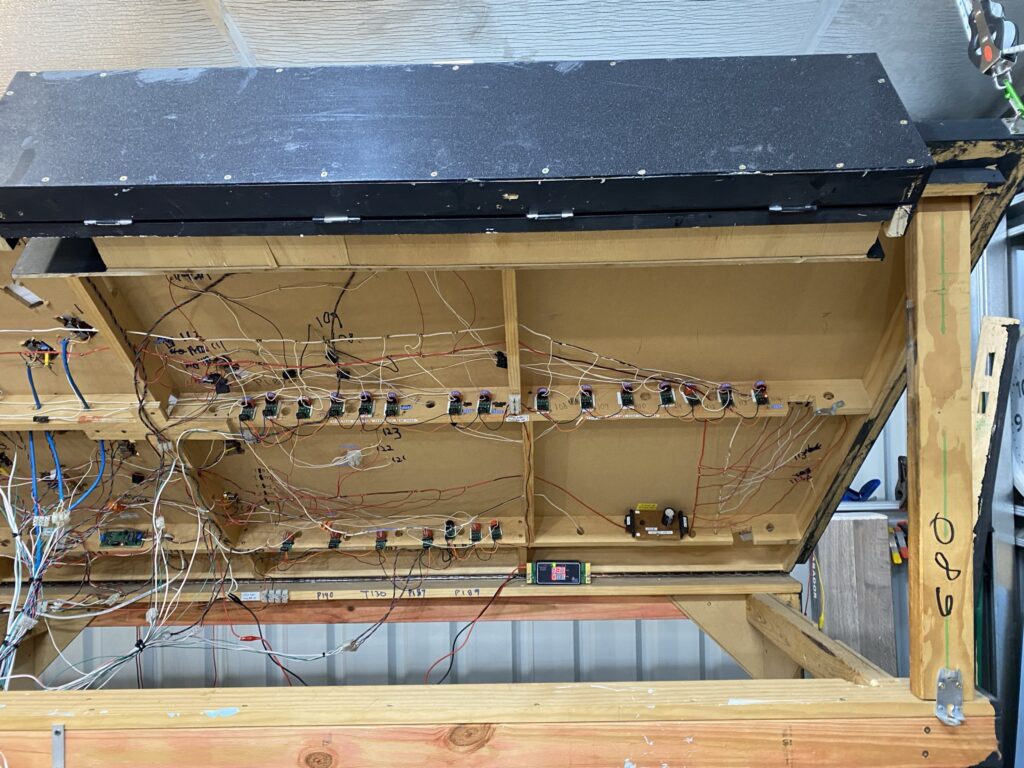
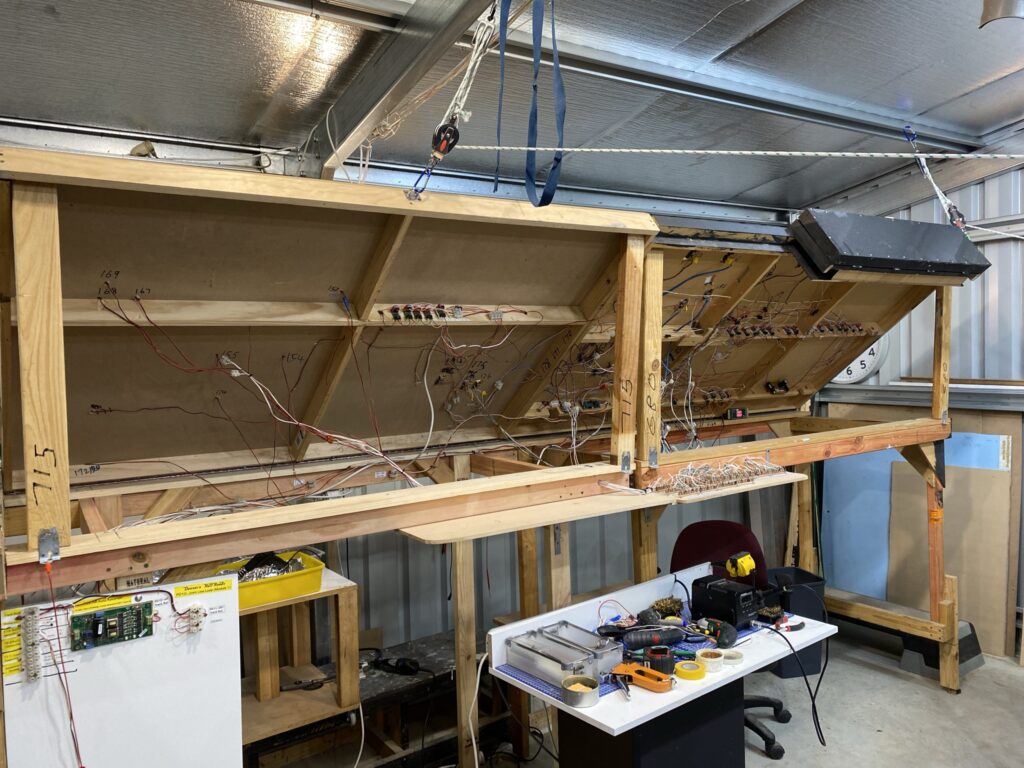
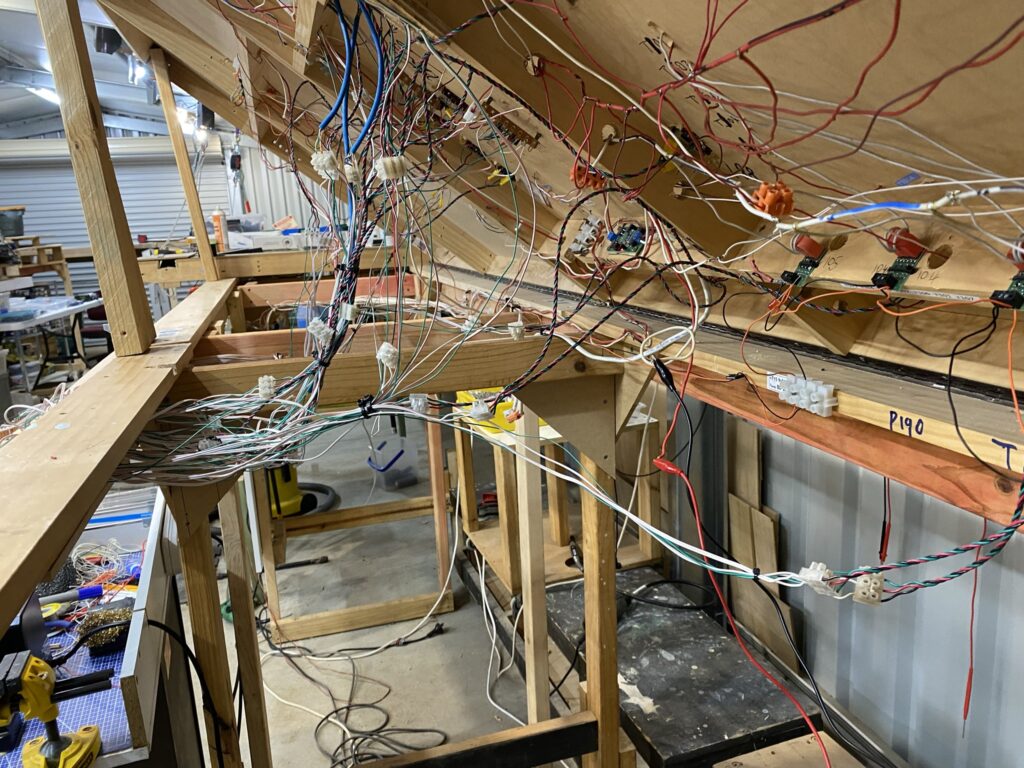
How could I forget about shorts?
Well I did. In my defense it has been two years since I last had to spend hours looking for a short, but still! As you can guess I went ahead and wired up all my feeders to the BUS wires and then surprise surprise it no work. Still lacking a memory of shorts I unwired all the feeders and still had a short. After some time with a continuity tester I remembered that the frogs on all Peco Electrofrog turnouts needed to be gapped or insulated. I had done some, but not all. Anyway after using my Dremel cutting wheel to make the missing gaps, all the shorts went away and I can now start again. This time I will test with my RRamp meter after every connection that everything is still OK.
At least I have finished wiring the 40 turnouts to the front of the layout. Now all I have to do is connect a whole load of accessory decoders and design the control panel for the switches and lights. It is already built. Then comes the fun part — coding a NCE Mini Panel.
But first I have to get the track wiring organised and test run some Locos. That should be fun, I hope.
And the beat goes on . . .
Donkey deep into wiring. I have 40 turnouts installed on just modules 1 & 1a and at least as many blocks requiring feeders and NCE BD-20 block detectors. Once all the block wiring and the accessory decoders are installed I plan to create a control panel with a diagram of the tracks and to install toggle switches and push-buttons to control the routes. The main line routes are going to be set using a NCE Mini Panel. For mainly economic reasons the industrial sidings, that do not require signalling, will use a central CDU (Capacitor Discharge Unit) and a diode matrix if necessary.
The following photos give an indication of where I am at with my wiring. Once finished I can start on building the industry kits and wiring up the temporary oval of track to enable test running and switching operations.

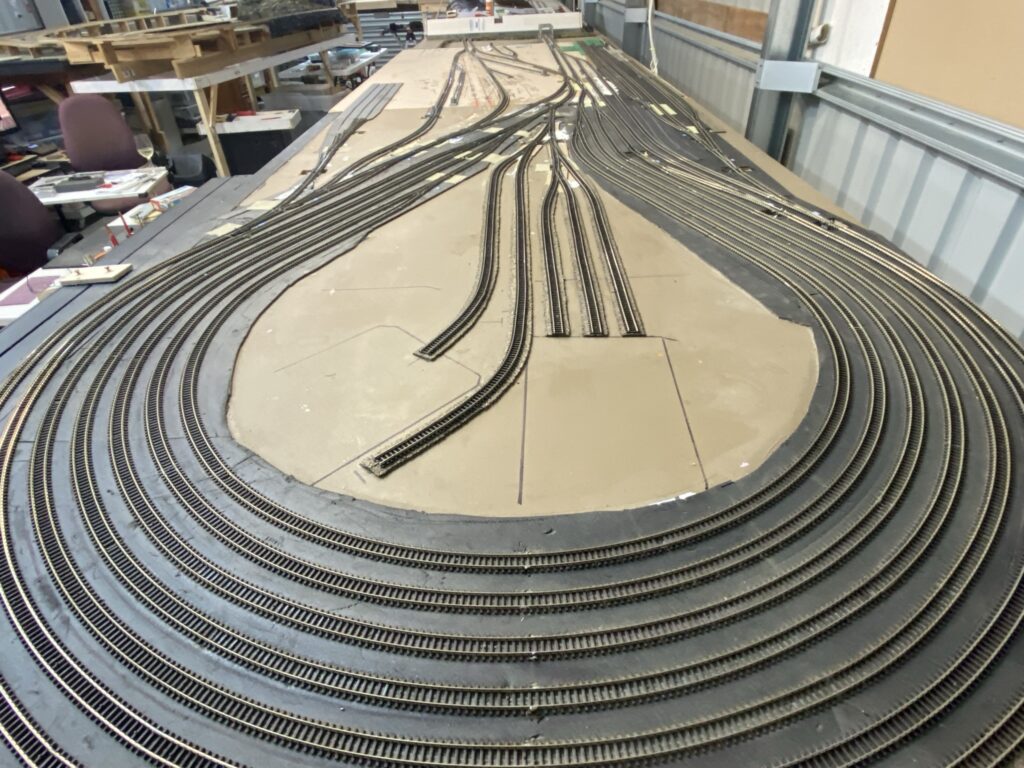

Finished tracklaying for Modules 1 & 1a (Power District 11)

It does not look much but there is a lot of complicated track laid in these two modules. I decided to scrap the Kato test layout as it had passed its usefulness days and I will shortly lay a temporary oval of track on Module 5 so that I can have a loop to test Locos. Consequently I have reused most of the Kato turnouts and straight track on Module 1a. Speedup the tracklaying considerably. I like the simplicity of Kato turnouts. I replaced a damaged PECO scissors crossing with a Kato and was amazed to find that Kato regard the unit as just ONE turnout with a couple of wires. The PECO scissors crossing required 4 point motors and 2 expensive frog juicers.
The challenge of course is to ballast the Kato track so that it blends in with the Peco track and is not obviously “toy” looking. If I can succeed I may well use more Kato turnouts in the future. I will elaborate on my immediate track laying plans and some significant changes to Phase II in a future blog.
We have started to lay track at last . . .
Just 10 turnouts left to install in module 1 and then its onto module 1a and the bridges in module 2. The track in the center of the photo is for the D&RGW Burnham Rail Yard & Shops. The track on the left leads to the Denver Market and the track on the right leads to various C&S industries and the branch line to the D&RGW Crested Butte Mine at Gunnison County.
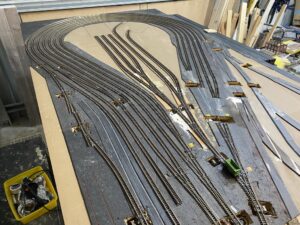
The holes have already been cut but it takes awhile to install the turnouts because I am re-cycling them, using the turnouts that were installed in modules 5 & 6. I am also using re-cycled track for the sidings, but not the main lines were I am installing brand new Peco code 80 track.
Ignoring all my tools covering module 1a the following photo shows modules 2 to 5 on the right and the Rio Grande Rocky Mountain area on the left. Initially only a temporary return loop will be installed between them. In time the loop will be converted to the Wye used to turn passenger trains so that they could back into Denver Union Terminal and a new D&RGW North Yard will be built.
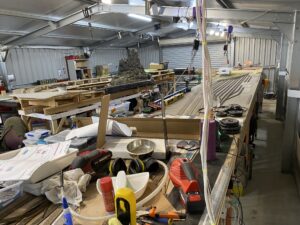
An overview of the entire layout can be found at https://denversrailroads.com/DPoverview.htm
Let’s get something finished . . . Continued
The current plan is to work only on modules 1 and 1a until they are both running well and scenic’d. Then to continue onto modules 2 to 5. This will include:
- Laying all the track and turnouts, including the addition of 2 more loops of track
- Wiring the track and turnouts to the control panel, including the installation of NCE SnapIt’s and LightIt’s
- Building the control panel, including the turnout controls and directional LED’s
- Installing working signals
- Wiring to a NCE Mini Panel using Macros to set up turnouts and signals for each of the 7 loops
- Cutting the South Platte River extension from module 2
- Tidying up the Cherry Creek river bed on module 2 and installing the bridges
- Extending the main line, wired to BUS stage only, through modules 2 to 5 to a temporary loop on module 5 for runaround loop testing
- Testing that all the tracks run well
- Building all of the kits (about 8 or more) planned for the modules
- Ballasting with the new Arizona Rock & Mineral ballast
- Adding the kits and low level grass and scenery
- Creating the Denver Market area south of the C&S 7th St area
- Building the front range mountains which will separate the Denver C&S 7th Street area from the Crested Butte Mine at Gunnison County
- Installing the kit for the Crested Butte Mine and attaching to the mountain scenery
Then I can finish laying the track on modules 2 to 5 (the DUT tracks are already laid) and install dozens of station platforms. But that is a job for another day! Unlikely to be this year.
Change of Direction . . . Let’s get something finished!
Rather than continue “putting the layout back together” which really means lots more carpenter jobs I have decided to start to build the entire layout starting with Module 1, which already has 5 loops of track installed for the Joint Line return loop.
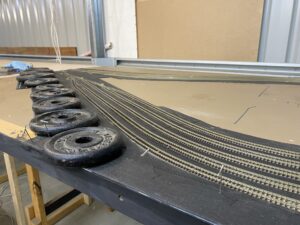
I have already started to lay new roadbed. I prefer cork but I found that I had a lot of Woodland Scenics foam trackbed left over and as it had already been used in this module I have used both foam and cork.
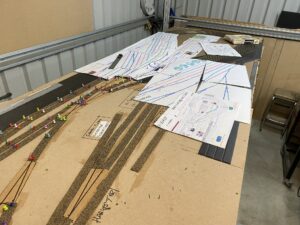
To be continued . . .
Putting the layout back together — Update #4
Rebuilt module 5a which completes the DUT coach yards and loco servicing. Used a 915mm continuous hinge and bolted it onto module 4.
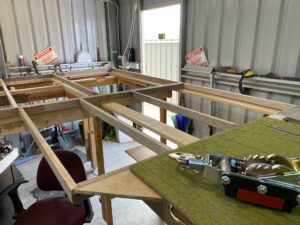
No idea if I am going to be able to winch modules 2, 3, 4 & 5a up as one unit. Will test shortly. Fastening the pull-along winches to the ceiling is a big job but the hardest part of the operation is getting the winches to release the wires after pulling up the modules so that they return to level bench-work.
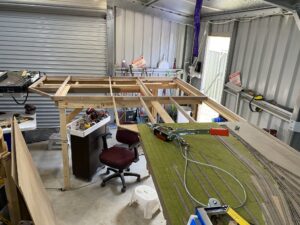
Finished the framing for modules 5b and 6a. After much thought have decided to use continuous hinges along the back 2.3m edge. It makes track and turnout wiring so much easier. The modules cannot be flipped once you add scenery and buildings but by then the track and turnouts should be well bedded in.
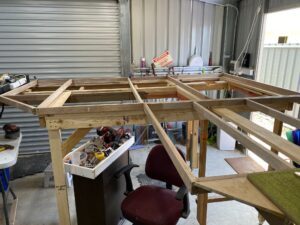
Just need to add plywood or MDF to the frames and it will be time to start laying track – at last.
Putting the layout back together — Update #3
Modules 1 & 1a bolted together and
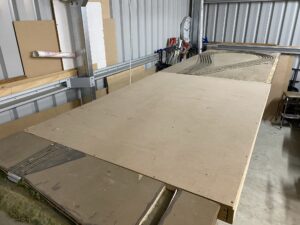
level with modules 2, 3 & 4.
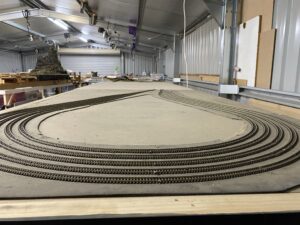
Connecting the L girder framework for modules 5 & 6 to module 4 is next on the list followed by the framing and the connection to module 7.
For an understanding of which module is which click here to view the trackplan.
Putting the layout back together — Update #2
Making good progress. All of the spotlights for Phase 1 have been installed together with 6 spotlights over my desk and the working area of the garage. As can be seen from the photographs all of the tools, modeling parts, kits and scenery supplies have now been placed in plastic boxes on carts under the layout. All of the carts and furniture are on wheels.



Time to start connecting all of the modules that make up Phase 1.